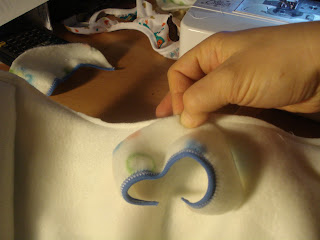This is not a post to get you drinking animal milk if you don’t already. Humans are the only species that continue to drink milk after weaning, and act that in reality is unnecessary. See: http://www.celestialhealing.net/milkpage.htm this site correctly states that: The Biggest problem with cow’s milk is that the protein in the cow’s milk damages the human immune system. Amino acids, the units that make up proteins, are building blocks for all living cells. When amino acids in our food are properly broken down by the digestive system into protein, it does no harm to the immune system. Protein from milk, however, is absorbed into the blood fully indigested, provoking an immune response. Repeated exposure to these proteins disrupts normal immune functions and may eventually lead to diseases.
This is true when it comes to our typical consumption of store bought pasteurized milk. Raw milk on the other hand contains its full complement of enzymes and lactase-producing bacteria needed by our bodies to break down and assimilate the milk sugar lactose. These helpful bacteria are killed in the pasteurization/homogenization process.
There are 60 plus (known) fully intact and functional enzymes in raw milk, each one of them essential in facilitating one key reaction or another. Some of them are native to milk, and others come from beneficial bacteria growing in the milk. I believe the most significant health benefit derived from food enzymes is the burden they take off our body. The amylase, bacterially-produced lactase, lipases and phosphatases in raw milk, break down starch, lactose (milk sugar), fat (triglycerides) and phosphate compounds respectively, making milk more digestible and freeing up key minerals. Other enzymes, like catalase, lysozyme and lactoperoxidase help to protect milk from unwanted bacterial infection, making it safer for us to drink.
Here is a link to a report detailing the science and rationale for drinking raw milk http://www.rawmilkcolorado.org/PDF/Why%20Raw%20Milk%20(Acrobat).pdf
If you live in Colorado a great website for information on raw milk or information on how and where you can purchase raw milk is http://www.rawmilkcolorado.org/
If you are not in Colorado I recommend visiting this page if you are interested in raw milk http://www.realmilk.com/where1.html
References:
Enzyme Nutrition: the food enzyme concept, Avery, 1985. Howell, E. (pp. 4-7)
Farkye, N.Y., 'Amylases' In: Advanced Dairy Chemistry Vol. 1: Proteins 3rd Ed., Academic/Plenum Publishers, 2003. Fox, P.F., McSweeny, P., Eds. (pp. 580-581)
Olivecrona, T., et al, 'Lipases in Milk' In: Advanced Dairy Chemistry Vol. 1: Proteins 3rd Ed., (pp. 473-488)
Shakel-Ur-Rehman, et al, "Indigenous Phosphatases in Milk' In: Advanced Dairy Chemistry Vol. 1: Proteins 3rd Ed., (pp.523-533)
http://www.raw-milk-facts.com/Raw_Milk_FAQ.html
This is true when it comes to our typical consumption of store bought pasteurized milk. Raw milk on the other hand contains its full complement of enzymes and lactase-producing bacteria needed by our bodies to break down and assimilate the milk sugar lactose. These helpful bacteria are killed in the pasteurization/homogenization process.
There are 60 plus (known) fully intact and functional enzymes in raw milk, each one of them essential in facilitating one key reaction or another. Some of them are native to milk, and others come from beneficial bacteria growing in the milk. I believe the most significant health benefit derived from food enzymes is the burden they take off our body. The amylase, bacterially-produced lactase, lipases and phosphatases in raw milk, break down starch, lactose (milk sugar), fat (triglycerides) and phosphate compounds respectively, making milk more digestible and freeing up key minerals. Other enzymes, like catalase, lysozyme and lactoperoxidase help to protect milk from unwanted bacterial infection, making it safer for us to drink.
Here is a link to a report detailing the science and rationale for drinking raw milk http://www.rawmilkcolorado.org/PDF/Why%20Raw%20Milk%20(Acrobat).pdf
If you live in Colorado a great website for information on raw milk or information on how and where you can purchase raw milk is http://www.rawmilkcolorado.org/
If you are not in Colorado I recommend visiting this page if you are interested in raw milk http://www.realmilk.com/where1.html
References:
Enzyme Nutrition: the food enzyme concept, Avery, 1985. Howell, E. (pp. 4-7)
Farkye, N.Y., 'Amylases' In: Advanced Dairy Chemistry Vol. 1: Proteins 3rd Ed., Academic/Plenum Publishers, 2003. Fox, P.F., McSweeny, P., Eds. (pp. 580-581)
Olivecrona, T., et al, 'Lipases in Milk' In: Advanced Dairy Chemistry Vol. 1: Proteins 3rd Ed., (pp. 473-488)
Shakel-Ur-Rehman, et al, "Indigenous Phosphatases in Milk' In: Advanced Dairy Chemistry Vol. 1: Proteins 3rd Ed., (pp.523-533)
http://www.raw-milk-facts.com/Raw_Milk_FAQ.html

























